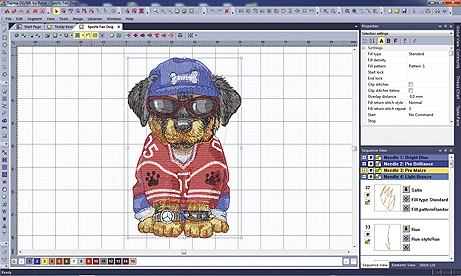


Chenille machines, both manual and current electronic machines can use a variety of threads and needles sizes to produce vastly different appearances. Moss stitches are most often used to fill in areas and create depth, while chain stitch is used to outline, monogram and can be used to produce a more delicate look. Using a hook needle that pulls the thread up from the looper below the needle plate as opposed to a standard sewing needle with a threaded eye, the chenille machine typically uses only one thread for both types of stitches, moss and chain.Ĭhenille embroidering machines typically produce two different stitch formations, the moss stitch, which is a loop stitch and the chain stitch. These machines are widely used by skilled operators.Ĭhenille embroidery machines typically produce both chenille stitches, also known as moss stitches, and chain stitches. Today hand operated chenille machines are made by a number of machine manufacturers. Some models added braid or cord, but the basic machine has remained the same for well over one hundred years. Since the original machine very few design changes have been made. A few years later Singer received the US Patent.

A French engineer named Bonnaz invented the first chenille sewing machine in 1866, soon he joined with the Cornely Company to manufacture and market his invention. Originally produced by hand stitching, the production of chenille became industrialized about twenty years after the patenting of the lockstitch sewing machine.

Traditional School Mascot Moss/Chain Work Historically chenille has had many uses in fashion and furnishings, from delicate work of lace to the bold look of school mascots, chenille is a form of embroidery most of us recognize. Chenille, French for caterpillar or fuzzy caterpillar, Webster’s says “a soft tufted silk, cotton, or worsted cord used in embroidery or for fringing.” In North America chenille is most commonly recognized as the emblems and letters sewn on letterman’s jackets.


 0 kommentar(er)
0 kommentar(er)
